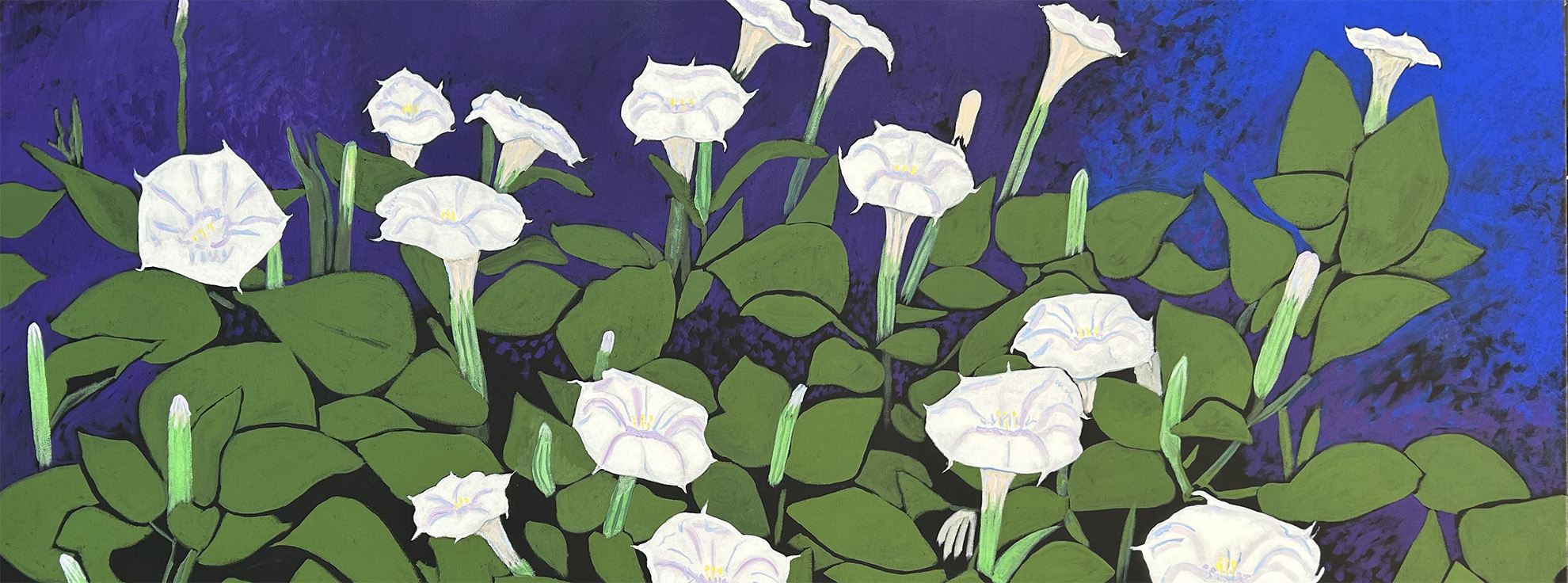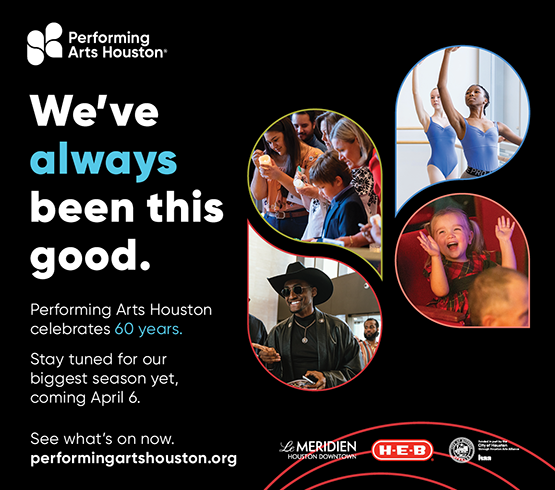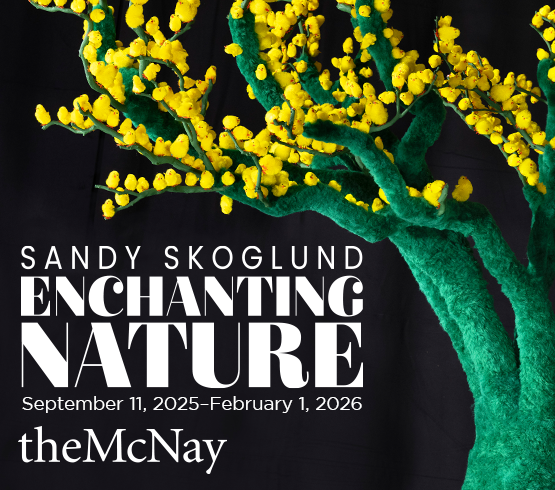For years, Lubbock to us was Buddy Holly, Texas Tech, cotton fields, oil wells, and a handful of artists we knew from their visits to Houston. Our short time in Lubbock revealed a vital and varied cultural arts scene.
It is eight hours by car from Houston, five hours from Dallas, or a short plane ride from the major cities in Texas. On our road trip to Santa Fe this summer, my partner, Henry Hunt, and I spent two days visiting artist studios, galleries, alternative spaces, and art centers.
Our first stop was the art-filled studio of longtime friend and painter James W. Johnson, who served as our tour guide. Johnson came to Texas Tech in 1978 for graduate school and never left. He has supported himself as a painter since then. His work blends technical mastery with arresting imagery. In June, Johnson received the Legacy Award at the 10th annual “Art on the Llano Estacado” from the Museum of Texas Tech University, which included an extensive exhibition of his work.
After an impromptu lunch at her home, we moved on to CO-OPt Research + Projects, an artist-run studio space and gallery founded in 2019. We met co-op member Cody Arnall and viewed the current exhibition. The storefront location includes a library and a workspace/theater where they host artist talks, performances, and experimental music. The co-op is a working studio for Arnall, J. Eric Simpson, and Aaron Hegert.
We drove north to the studio of Ericka Pochybova, better known as EBOVA. Born in Slovakia, she came to Lubbock to visit her sister and decided to stay. Her large, colorful, minutely detailed canvases range from portraits to mandalas to swirling abstractions.
At this point, James took us to two of the established galleries in town that show his work and many other artists—Broadway Contemporary Fine Art and Charles Adams Gallery. Broadway Contemporary is a sizeable multi-level gallery owned by Janelle Barrington Spivey, also an artist. Longtime gallerist and art pioneer Charles Adams retired in 2022, and Zach Morriss now runs Charles Adams Gallery, which represents more than 30 artists, including Jaddo, Shannon and Will Cannings, James Watkins, Sophia Villalobos, and the late Sara Waters.

1 ⁄12
Installation view, You Can Write Your Own Autobiography, Rachel Anderson / Sarah Fisher, College of Health and Human Sciences, Texas Tech University. Photo by Ashley Brister for Texas Tech University.
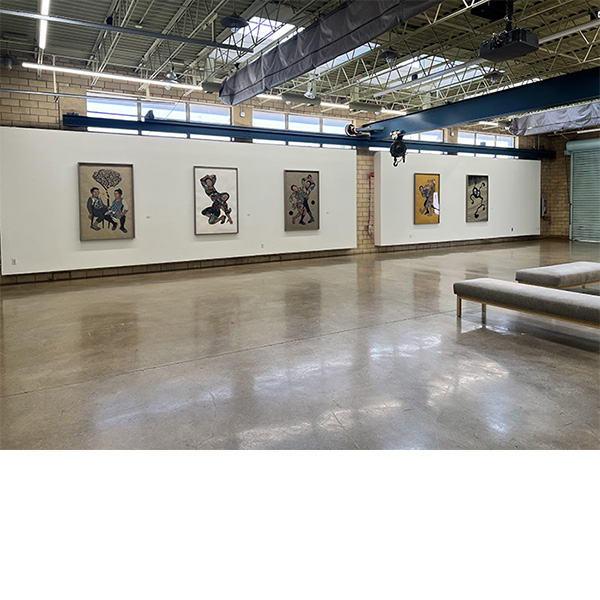
2 ⁄12
Installation view, Julie Speed, Cain & Abel, Helen DeVitt Studio Gallery open until October 26, 2024. Photo courtesy of LHUCA.
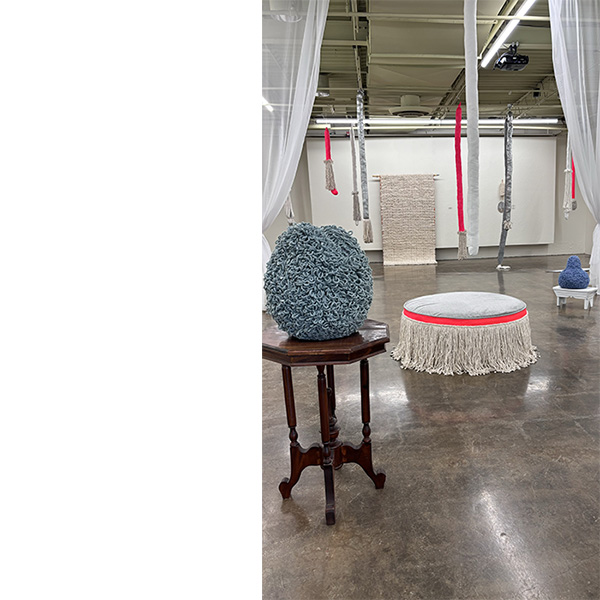
3 ⁄12
Installation view, Melissa Dorn, Femutility Closet, John F. Lott Gallery open until October 26, 2024. Photo courtesy of LHUCA.
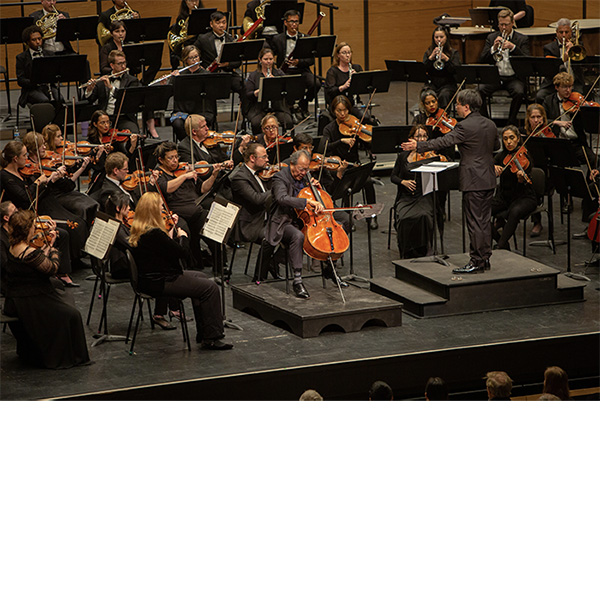
4 ⁄12
David Cho conducting Yo-Yo Ma and the Lubbock Symphony Orchestra on June 8, 2024. Photo by Drake Design Photography.

5 ⁄12
James W. Johnson, Chloe, acrylic on cradled birch panel, 23" x 13"
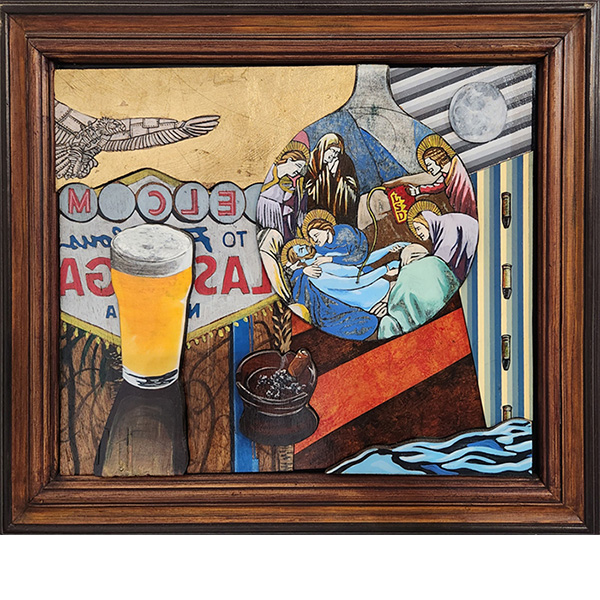
6 ⁄12
Bryan Wheeler, Slinger Variation #1: The Deferral of Being, acrylic, charcoal and gold leaf on cut-out panels, 23 X 28”, 2023
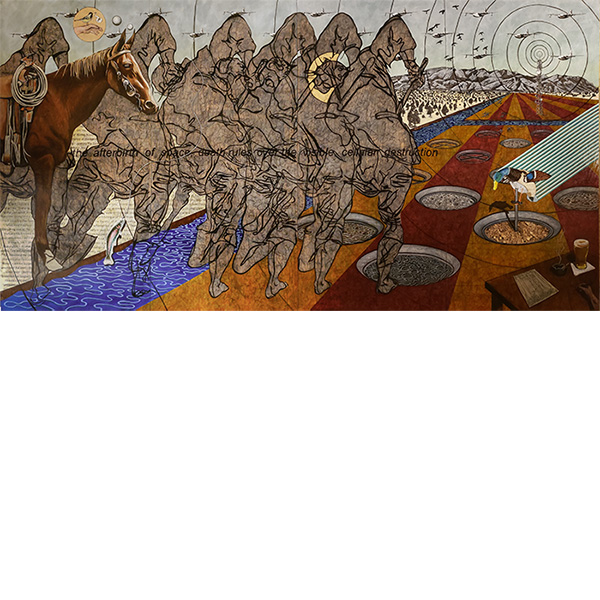
7 ⁄12
Bryan Wheeler, Sublime, Starring the Man, acrylic, charcoal, gold leaf, and beaver-made wood chips on panel, 96” 192”, 2019
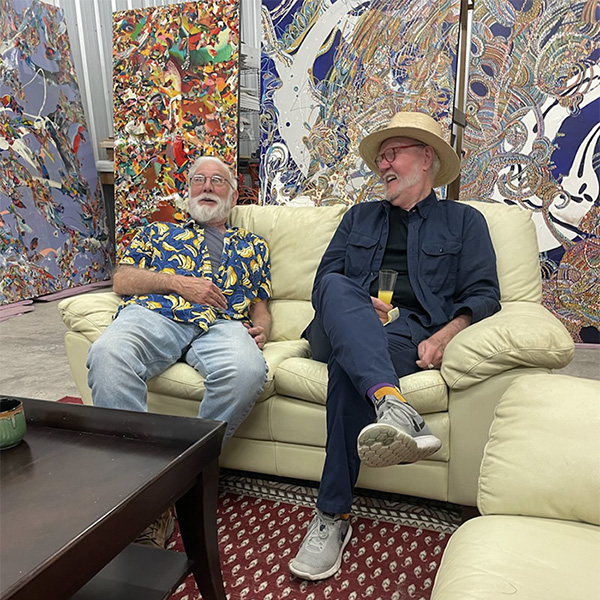
8 ⁄12
Painter James W. Johnson and Henry Hunt in Erika Pochyova's large painting studio in Lubbock. Originally from Slovakia, Erika is known professionally as EBOVA. Photo by Donna Tennant.
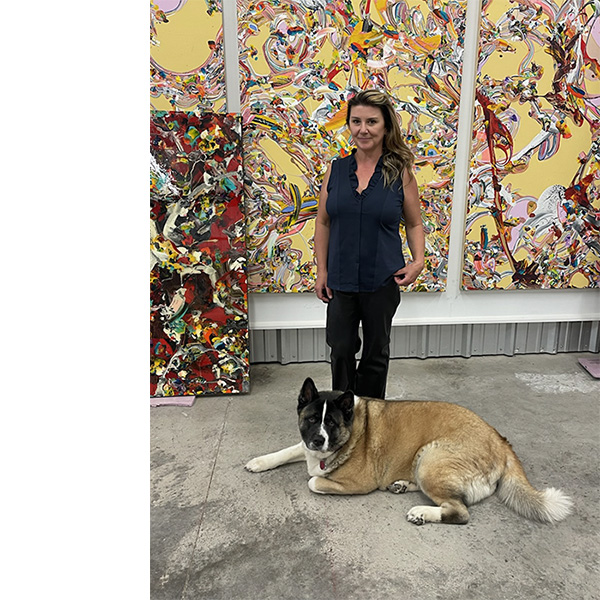
9 ⁄12
Erika Pochyova in her studio with her dog Kana. Photo by Donna Tennant.

10 ⁄12
William Cannings, Curve, Reach, Twist (left to right), 2023, Inflated steel, automotive paint, Image Courtesy of Anya Tish Gallery

11 ⁄12
Shannon Cannings, Bamboozle, 2023, Oil on panel
Image Courtesy of Anya Tish Gallery
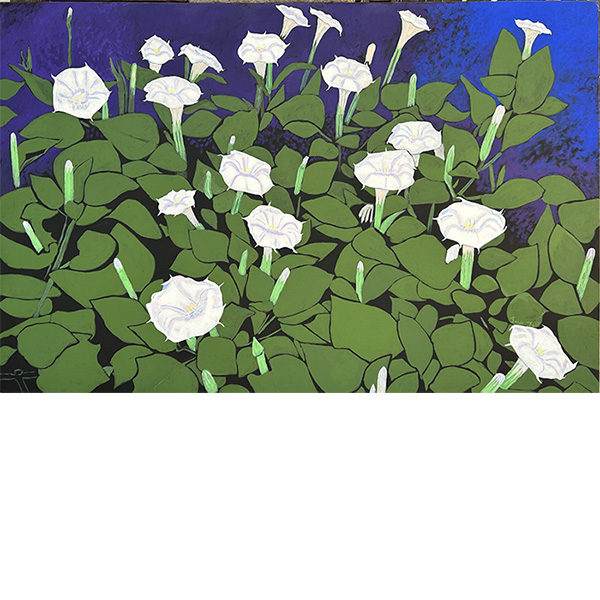
12⁄12
Lahib Jaddo, Moon flowers of Lubbock, acrylic on canvas, 42 x 64”
LHUCA sponsors the First Friday Art Trail, which draws thousands of people to the Lubbock Cultural District. According to Glasstire, in July, the Lubbock City Council voted to cut the proposed $25,600 funding of the Friday Art Trail due to several programs that “promote[ed] the LGBT agenda.” At a contentious August meeting, the council decided to restore $5,000 for security so the event could continue.
Later in the day, we visited the studio of Shannon Cannings, a painter who shows at Anya Tish Gallery in Houston and Chris Worley Fine Arts in Dallas. Last year, she and her husband, William Cannings, had a two-person show at Anya Tish covered by this magazine. William’s inflated steel sculptures and Shannon’s hyper-realistic toy guns and targets made for a provocative and compelling exhibition. They both teach at Texas Tech, where Will is an associate professor of art and Shannon is an assistant professor of practice.
The Museum of Texas Tech collection at the university consists of anthropology, textiles, natural history, and more, with nine permanent and ten rotating galleries. The museum includes the noted Artist Printmaker/Photographic Research Collection of 24,000 prints, proofs, sketchbooks, photographs, and drawings by artists who practiced in the western U.S. On exhibit at the College of Health and Human Sciences through the Fall 2024 semester is an installation by Houston artist Sarah Fisher and Texas Tech Associate Professor Rachel Anderson. Another vital exhibition space is the Landmark Arts Gallery, part of the Texas Tech School of Art, under the direction of Joe Arredondo.
Our final stop was the home and studio of painters Ghislaine & Lando Fremaux-Valdez, who were preparing for a significant show at the Pollock-Krasner House. Ghislaine is an associate professor of art and interim director of the School of Art at Texas Tech. Margaritas in hand, we experienced the couple’s large, powerful collaborative paintings, which explore the human body and its spiritual and ritualistic significance using art-historical references.
The Lubbock Entertainment/Performing Arts Association website offers information on other museums and performing arts organizations, including the American Theatre Guild and Buddy Holly Hall of Performing Arts and Sciences, home to Ballet Lubbock and the Lubbock Symphony Orchestra. Founded in 1946, the Lubbock Symphony includes the Lubbock Youth Orchestras and the Lubbock Chamber Orchestra. In 2021, they published a book celebrating the symphony’s 75th anniversary and past performances by Yo-Yo Ma, Wynton Marsalis, Itzhak Perlman, Tony Bennett, and Renée Fleming.
Despite its remote location and flat topography, Lubbock’s visual arts environment is thriving. Texas Tech is a large educational institution with a history of faculty members who attract serious artists to its fine arts programs. A dynamic local economy and affordable studio space attract and retain artists. James Johnson observed, “When I was in school at Tech, most graduates disappeared the day after graduation. Now, talented artists stay in Lubbock, not only because it’s cheap to live and work here, but because they can be part of a vibrant art community.”
Lubbock has all the ingredients necessary to cross-pollinate and nurture an integrated art scene. We left with an understanding of why Lubbock is home to a flourishing art community and a desire to return.
—DONNA TENNANT AND HENRY HUNT

